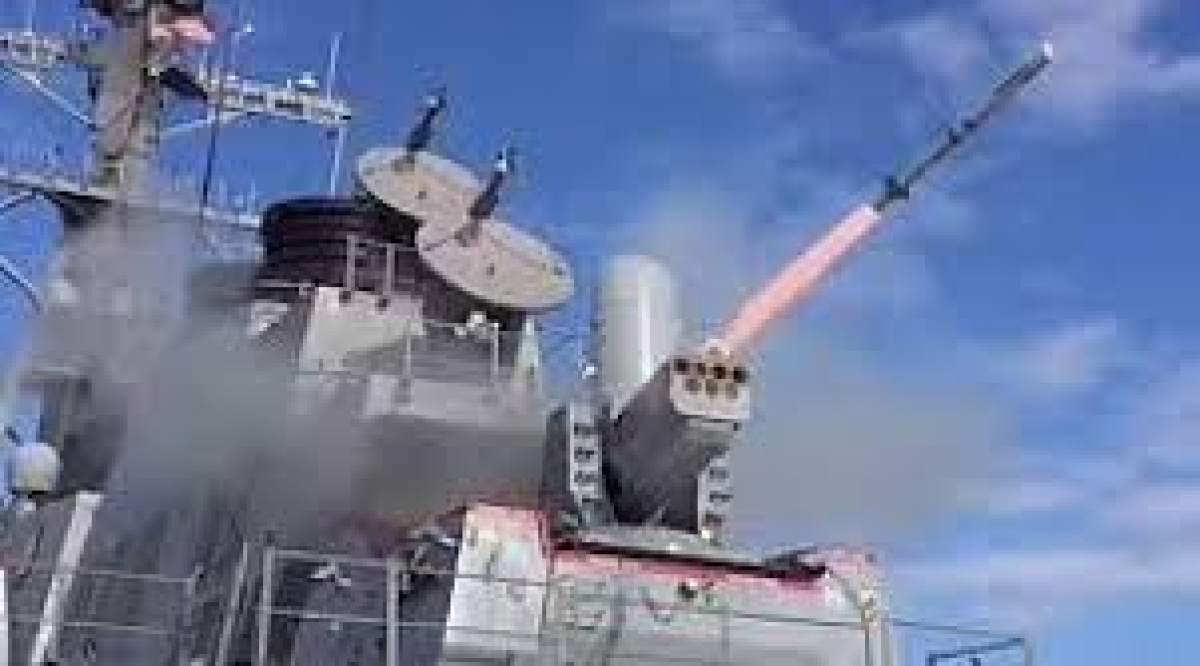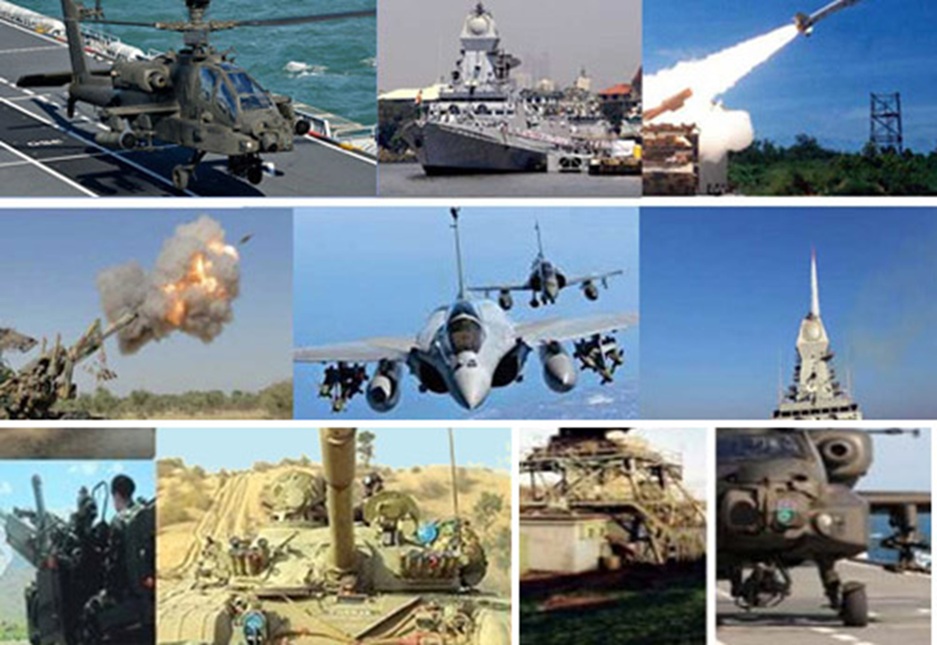Part 1 of this article[1] highlighted the need for the application of Modelling and Simulation (M&S) techniques for selection of weapons system and configuration them onboard ships. Part 2 examines the various models that have been developed as part of a research study as well as developed commercially for evaluating the effectiveness of Air Defence weapon system.
Developing Model for ASMD
Developing a model for Anti-Ship Missile Defence (ASMD) is a major challenge. It is a complex problem for the developer to design and create a model to realistically replicate the system capabilities to assess the efficacy of weapon systems. To determine the validity and consistency of the model, there is a need to conduct extensive simulations by constantly varying the parameters to refine the model behaviour so that the results are aligned with real-world expectations. Maintaining records of the runs and comparing them with the real results, once the asset is tested and put into service, helps in analysing, fine-tuning and validating the model.
To study this complex problem for an individual ship as well as for a multiple-ship formation, a number of models are currently available. There are a number of commercially available software available besied the ones being developed by students at the US Naval Postgraduate School Monterey, as part of their thesis to analyse the air defence effectiveness of systems. These are elucidated below.

Image Source: https://www.mod.go.jp/
Ship Air Defence Model (SADM)
The Ship Air Defence Model (SADM) developed by BAE[2] is a versatile simulation tool which enables high fidelity operational analysis of Task Group level air and surface warfare engagements. It is a platform where scientists, engineers, military tacticians and operators can collaborate to maximise ship survivability and enhancing mission effectiveness. The tool is primarily designed to simulate missile engagements in the maritime open ocean and littoral battlespace.
SADM simulates the defence of a single ship or task group against one or more attacking Anti-Ship Missiles (ASMs). It simulates softkill options using chaff, decoys and jammer models while hardkill options are missile, gun and Close-in Weapon System (CIWS) models, executed by the Command and Control (C2) system, model. The model includes a batch parameter model which facilitates the automation of multiple runs over a set of variables without having to manage individual runs or merging of resultant data. Within each run, the model may be configured to perform many iterations so that the probabilistic variables are exercised to yield statistically significant results. This Monte Carlo method allows convergence and improves confidence in the results. The global user group of this software includes major international navies, defence research establishments like Defence Science and Technology Organisation of Royal Australian Navy, Defence Research and Development Canada, Defence Science and Technology Laboratory in the UK, Office of Naval Research & Naval Research Laboratory in the USA [3]. It is also used by defence contractors Lockheed Martin, Raytheon & Roketsan for developmental activity.
Other Models Available
Among the research papers on the air defence problem available on Naval Postgraduate School website[4] , a few interesting ones are discussed here.
- Model 1
One of the earliest models developed was an interactive Monte Carlo simulation model (Interactive Simulation of System Performance) by Chia, Hua Kai [5] for Naval Postgraduate School thesis (1989). The simulation is a simplified operational model of reality. It simulates the integrated performance of hard-kill and soft-kill systems against a four anti-ship missile attack and predicts the expected number and percentage of anti-ship missiles destroyed by various weapon modules and the corresponding ship survivability. It has been simplified by giving deterministic values for operational parameters, such as radar detection range, probability of kill, reaction time for hard-kill and soft-kill systems, and the impact of enemy jamming. The study determines the expected number of missiles leaking through to the ship for different detection ranges and different Probability of Kill (PK) and suggests options to improve the numbers – increasing PK or reducing reaction time. For example, at detection range 20 Nautical Mile (Nm) the expected value of leaking missiles is 2.24 (for PK =0.3), while the mean value of expected leaking missile is 1.37( for PK =0.7), which is a difference of 0.87 or about 22%. Similarly, at detection range 20 Nm, the expected number of the anti-ship missiles destroyed by the Surface to Air Missle (SAM) is 1 .09 (for PK =0.3), and 1.96 (for PK =0.7), a difference of 0.90. The ship survivability and the improvements in Anti Ship Missile (ASM) kills were estimated varying the PK and reaction time.
- Model 2
A second model developed was by Richard O Johns [6]. for Naval Postgraduate School thesis (1996). He developed an analytic model to assess the overall effectiveness of the DD-963 Spruance class destroyer against an Exocet cruise missile threat. The model considers the detection capabilities, availability, reliability, and kill probabilities of the defensive systems onboard as well as the readiness and training of the crew to initiate an engagement against the incoming threat. The model considers distance at which the missile is first detected, the range of the threat at the time of launch, and the capability of the crew to launch (fire) the weapons in specified range intervals after detection. The configuration of the combat system, the firing policy and other weapon performance parameters are also employed in the model. The analysis used to develop this model is not unique to this ship class and can be adapted for other classes of ships. The model considers the integration of the defensive systems onboard, the availability and reliability of these systems, and contains parameters that can be used to incorporate the crew’s ability to employ the various weapon systems against a cruise missile threat.
- Model 3
The concept of kill chain analysis was used by Roy smith, in his thesis [7] to analyze ship vulnerabilities to the Anti-Ship Cruise Missile (ASCM) problem to ascertain survivability probabilities. The kill chain framework [8], as perceived by the eyes and sensors of the ASCM, was used for the analysis, when the ASCM encounters the layered defence of a target ship(hard kill and soft kill). The analysis is done using common software programs that perform spreadsheet and decision tree analysis (@Risk for Excel (version 5.5) with Precision Tree and Monte Carlo simulation tools used as add-ins to Microsoft Excel). The paper looks at eighteen ASCMs, including Sunburn and BrahMos, and examines their probability of success against a generic ship that has a defensive suite similar to the current Arleigh Burke-class destroyers. The survivability of ASCM analysed in the study is a low 10% with no soft kill measures used and which increases to 27–35 per cent when soft kill measures are used by the ASCM. This conclusion is at great variance when compared with actual hit rates (0.423) analysed using historical data[9]. This is probably because of the assumptions of greater PK for the SAM, the higher probability of detection and starting the engagement process with LRSAM beyond the detection range of radar detection used in the model.
- Model 4
An event-step Anti-Ship Missile Defense (ASMD) model was used by Patrick Chase in his thesis [10] for the evaluation of the Evolved Seasparrow Missile (ESSM) and an improved Rolling Airframe Missile (RAM). The performance of both systems was evaluated within the context of a single-ship and a multi-ship formation responding to ASCM attacks to assess the effectiveness of additional anti-ship missile defence systems and identify any tactical insights derived from the modelling results of the multi-ship formation. Chase used the ASMD model developed by James Townsend (1999)[11], an object-oriented, event-stepping model which simulates the entire process by which ASCMs select their targets, and by which defenders assign defensive fire. The model uses missile kinematics realistically and handles targeting by accounting for direction of motion, screen design of the naval formation, the size of the targets in the formation, and missile altitude. One of the outcomes of simulations was to reinforce the superiority of a Shoot-Shoot-Look firing doctrine over the Shoot-Look-Shoot or a Shoot only policy.
Summary
The study of the above models highlights that the assumptions for the model need to be carefully considered, as incorrect assumptions may skew it giving a greater than necessary advantage to the defensive missile systems over threat ASCMs, which will result in a much higher success rate for the SAM systems. An analysis of the simulation results of the Townsend model, used by Chase precisely indicated this ambiguity. Simulations with an Aegis cruiser armed with SM2ER defending against Exocet attacks (Raid sizes of two, four, and eight) gave an outcome of only one Exocet hit against the cruiser in every 75 trials, which is quite unrealistic when compared to the historical hit probability of 0.4[12]. The main cause for the disproportionately high effectiveness of SAM systems is the assumption of perfect detection and tracking capability in the model for the sensors. The interplay between the defensive missile systems and the threat ASCMs needs to be balanced using a range-based Probability of Hit for the SAMs, the inclusion of stealth factor or characteristic to the ASCM model to inhibit detection or tracking and modify sensor properties to allow for stressors that complicate the detect-to-engage process.
Inhouse Develpment of Models
There is a need to develop our own models to evaluate weapon systems. This could be tasked as a project to Institute for Systems Studies & Analyses (ISSA), a DRDO lab, which has expertise in M&S. It could be awarded as a project for postgraduate studies undertaken by naval officers in IITs. In the past, Indian Naval Tactical Evaluation Group (INTEG) had a Sea Eagle battle model, which was used to generate the efficacy of Surface to Surface Missiles (SSMs) attacks. There is also a model available at INTEG, which evaluates the efficacy of screens, which is an adaption of the sea eagle battle model. It is time to develop a high-resolution naval combat model to answer questions related to surface combatant air defence.
Conclusion
The selection of weapon systems is a complex project management function. The integration of M&S techniques into the process for formulating Naval Staff Quality Requirements (NSQRs) will definitely make it a more objective process. The limitations of testing weapon system effectiveness onboard ships with expensive field trials particularly for new weapons systems can be done away with the use of M&S. One of the benefits is to get an early look into the performance of a ship that is still being constructed. This tool, while being complementary to formal engineering activities, will empower decision-makers with early indications about ship capabilities and the existence & extent of potential gaps in capability that are challenging and expensive to evaluate through operational testing.
Title image courtesy: https://www.whatech.com/markets-research/military
Disclaimer: The views and opinions expressed by the author do not necessarily reflect the views of the Government of India and Defence Research and Studies
References:
[1] https://dras.in/indian-navy-modelling-and-simulation-techniques-for-selecting-weapon-systems-for-war-ships-part-i/
[2] https://www.baesystems.com/en-aus/what-we-do/sadm
[3] Ship Air Defence Model, The most versatile model for maritime air defence analysis, https://www.baesystems.com/en/download-en/20160129062326/1434554723787.pdf
[4] https://calhoun.nps.edu/
[5] Chia, Hua Kai. A simulation of a combined active and electronic warfare system for the defense of a naval ship against multiple low-altitude missiles threat, Master’s Thesis, Naval Postgraduate School, Monterey,California, September, 1989
[6] Richard O Johns. AAW Effectiveness of the DD-963 Spruance Class Destroyer: An Analytic Approach, Master’s Thesis, Naval Postgraduate School, Monterey, California, 1996
[7] Roy M. Smith, “Using Kill-Chain Analysis to Develop Surface Ship CONOPs to Defend Against Anti-Ship Cruise Missiles”, Master’s Thesis in Systems Engineering Management, Naval Postgraduate School Monterey, CA, 2010
[8] The term kill chain relates to the structure of an attack; consisting of target identification, force dispatch to target, decision and order to attack the target, and finally the destruction of the target. http://cno.navylive.dodlive.mil/2013/04/23/kill-chain-approach
[9] Prakash BR, Analysis of missile effectiveness – A historical perspective. https://dras.in/
[10] Patrick, Chase D, “Assessing the Utility of an Event-Step ASMD Model By Analysis of Surface Combatant Shared Self-Defense” Master’s Thesis in Operational Research, Naval Postgraduate School Monterey, CA, 2010
[11] James R Townsent, “Defense of Naval Task Forces from Anti-Ship Missile attack” Master’s Thesis in Operational Research (1999), Naval Postgraduate School Monterey, CA, 2010
[12] Prakash BR, https://dras.in/analysis of missile effectiveness – A historical perspective







